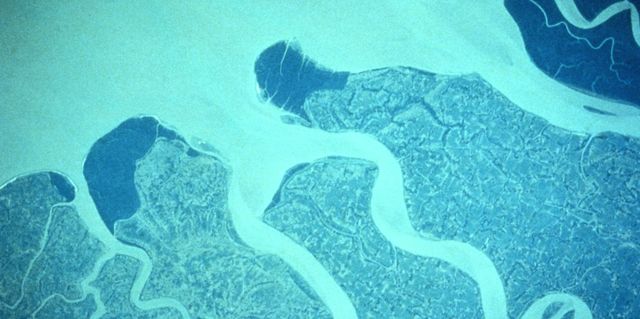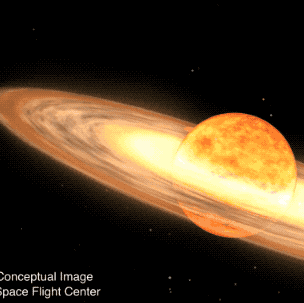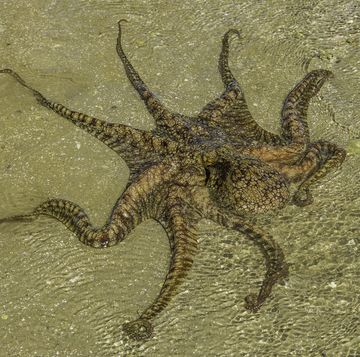- Scientists at Rutgers have made a breakthrough in blue energy, which harnesses river and sea water and their natural interaction.
- Using nanotubes, scientists collect negative and positive ions separately and use the difference to create energy.
- The process has come a long way, but is still just 2 percent effective, with much room for refinement.
After years of hard work and experimentation, scientists have developed a way to turn river delta churn into electrical energy, an idea known as “blue energy.” The work has developed incrementally over time as scientists take down obstacles one by one using cutting-edge technology. Rutgers scientists have unlocked the latest step and offered hope that the energy-capturing film can be manufactured in big enough pieces to be worthwhile.
The spaces where rivers of fresh water crash into oceans and seas, called estuaries or deltas depending on their structure, hold huge energy potential because of the way salt water and fresh water interact and redistribute each other. In 2013, French scientists began studying this potential by pairing a silicon-based film and a boron-based nanotube to make a charged filter that only let positively charged ions through.
Electrical charge in particles behaves the same as magnetic charge, where like repels like. The nanotubes have a strong negative charge that keeps other negative particles out. “Sorting” water in this way means creating two discrete pools with a huge charge difference between them, and harnessing the energetic salt’s charge differential is what generates electricity. This is also why our body’s electrical systems are enabled by salty electrolytes dissolved in water.
The membrane of film plus nanotube worked well, but wasn't practical in 2013. The scale of the material is so small that there wasn't any way to guarantee that a nanotube would even line up correctly to let water pass through it. Despite having enough room for “millions of pores per square centimeter,” scientists couldn’t begin to try to make test membranes.
So the Rutgers team used a series of nano-sized and scientifically brilliant versions of age-old manufacturing practices to finally make a feasible membrane. The scientists mixed positive and negative charged substances to make a coating they could selectively activate in order to force all the nanotubes to stand upright; made the material with molecules so large that they couldn’t get stuck inside the nanotubes; and scraped the excess coating material off the surface of the membrane. Last but not least, they used a tiny beam to make sure all the nanotube pathways were as clear as possible.
There’s still a catch, though. Even with this specialized and highly intensive process, just 2 percent of the nanotubes were conducting as intended in the study. That’s better than 0 percent, of course, and the power the Rutgers team generated was 8,000 times more power-dense in the same area as the original 2013 membrane studied in France. But the Rutgers team expressed hope it can continue to refine its process and open even more of the nanotube “pores” to make the membrane much more efficient.
If this seems like a lot of work for a very specialized application, that’s true—but not the whole truth.
Science reports that the amount of water going from rivers to salt water each year generates big energy: “roughly the amount that can be generated by 2000 nuclear power plants,” or 2.6 terawatts, by some estimates. The public is already amenable to the idea of hydroelectric power, where rivers are harnessed by dams that use their energy to turn turbines and make electricity. This is one of the oldest ways people have generated power, like to physically turn millstones or water-powered wheels. The rivers are always flowing, and we might as well harness their energy.

Caroline Delbert is a writer, avid reader, and contributing editor at Pop Mech. She's also an enthusiast of just about everything. Her favorite topics include nuclear energy, cosmology, math of everyday things, and the philosophy of it all.













